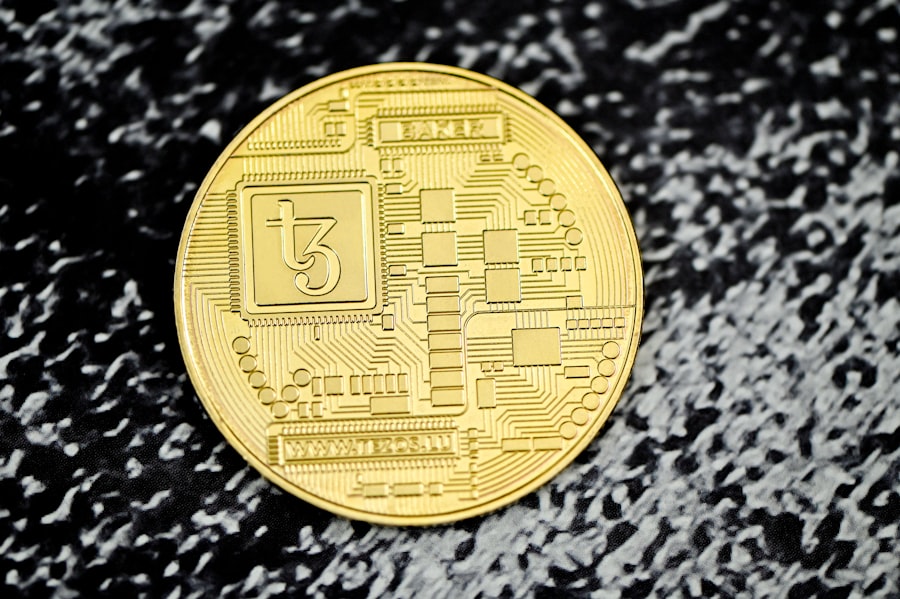In an increasingly interconnected world, the concept of trust has evolved significantly. Traditional systems of trust often rely on centralized authorities, such as banks or governments, to validate transactions and relationships. However, as we navigate the complexities of the digital age, we find ourselves drawn to decentralized trust networks that empower individuals and communities.
These networks operate on the principle that trust can be established without the need for a central authority, allowing for greater transparency, security, and autonomy. By leveraging technology, particularly blockchain, we can create systems where trust is built through consensus rather than reliance on intermediaries. Decentralized trust networks represent a paradigm shift in how we perceive and engage with trust.
They offer a framework where participants can interact directly, fostering collaboration and innovation. In these networks, every participant plays a crucial role in maintaining the integrity of the system. This shift not only democratizes access to resources but also enhances accountability among users.
As we delve deeper into the world of decentralized trust networks, we will explore how Bitcoin and other cryptocurrencies have emerged as pivotal players in this transformative landscape.
Key Takeaways
- Decentralized trust networks are a new way of establishing trust without relying on a central authority.
- The rise of Bitcoin and other cryptocurrencies has paved the way for decentralized trust networks to flourish.
- Bitcoin enables decentralized trust networks by using blockchain technology to securely record and verify transactions.
- Using Bitcoin in trust networks offers advantages such as transparency, security, and lower transaction costs.
- However, there are challenges and limitations to using Bitcoin in trust networks, including scalability and regulatory issues.
The Rise of Bitcoin and Cryptocurrencies
The emergence of Bitcoin in 2009 marked a significant turning point in the financial landscape. Created by an anonymous individual or group known as Satoshi Nakamoto, Bitcoin introduced a revolutionary concept: a peer-to-peer electronic cash system that operates without a central authority. This innovation sparked the birth of cryptocurrencies, which have since proliferated into thousands of different digital currencies.
The allure of cryptocurrencies lies in their ability to provide an alternative to traditional financial systems, offering users greater control over their assets and transactions. As we reflect on the rise of Bitcoin and cryptocurrencies, it becomes evident that they have captured the imagination of millions worldwide. The decentralized nature of these digital currencies allows for borderless transactions, reducing the friction often associated with traditional banking systems.
Moreover, the underlying blockchain technology ensures that every transaction is recorded transparently and immutably, fostering a sense of trust among users. This newfound freedom has led to a growing acceptance of cryptocurrencies in various sectors, from retail to investment, as individuals seek to harness their potential for financial independence.
How Bitcoin Enables Decentralized Trust Networks

Bitcoin serves as a cornerstone for decentralized trust networks by providing a secure and transparent medium for transactions. At its core, Bitcoin operates on a blockchain—a distributed ledger that records all transactions across a network of computers. This technology eliminates the need for intermediaries, allowing users to transact directly with one another while maintaining a high level of security.
Each transaction is verified by network participants through a consensus mechanism known as proof-of-work, ensuring that only legitimate transactions are added to the blockchain. In addition to its technical capabilities, Bitcoin embodies the principles of decentralization and autonomy that are essential for building trust networks. By enabling users to retain control over their assets and transactions, Bitcoin empowers individuals to engage in economic activities without fear of censorship or interference from centralized authorities.
This empowerment fosters a sense of community among users, as they collectively contribute to the maintenance and security of the network. As we explore further, we will uncover how these attributes make Bitcoin an ideal candidate for facilitating decentralized trust networks.
Advantages of Using Bitcoin in Trust Networks
The integration of Bitcoin into decentralized trust networks offers numerous advantages that enhance user experience and foster collaboration. One of the most significant benefits is the reduction of transaction costs. Traditional financial systems often impose hefty fees for cross-border transactions or currency conversions.
In contrast, Bitcoin transactions typically incur lower fees, making it an attractive option for individuals and businesses alike. This cost-effectiveness encourages more participants to engage in economic activities within decentralized networks. Another advantage lies in the enhanced security that Bitcoin provides.
The cryptographic principles underlying Bitcoin ensure that transactions are secure and resistant to fraud. Each transaction is recorded on the blockchain, creating an immutable record that can be audited by anyone at any time. This transparency builds trust among participants, as they can verify each other’s actions without relying on a central authority.
Furthermore, the pseudonymous nature of Bitcoin transactions allows users to maintain their privacy while still engaging in secure exchanges. As we continue to explore the implications of Bitcoin in decentralized trust networks, it becomes clear that these advantages play a crucial role in fostering a more equitable and efficient economic landscape.
Challenges and Limitations of Bitcoin in Trust Networks
Despite its many advantages, the use of Bitcoin in decentralized trust networks is not without challenges and limitations. One significant concern is scalability. As more users join the network and transaction volumes increase, the Bitcoin blockchain can become congested, leading to slower transaction times and higher fees.
This scalability issue poses a challenge for widespread adoption, particularly in scenarios where rapid transactions are essential. Additionally, regulatory uncertainty surrounding cryptocurrencies presents another hurdle for decentralized trust networks utilizing Bitcoin. Governments around the world are still grappling with how to classify and regulate digital currencies.
This lack of clarity can create apprehension among potential users who may fear legal repercussions or restrictions on their ability to transact freely. As we navigate these challenges, it is essential to consider how innovative solutions and regulatory frameworks can address these limitations while preserving the core principles of decentralization and autonomy.
Examples of Decentralized Trust Networks Utilizing Bitcoin

Several innovative projects have emerged that leverage Bitcoin within decentralized trust networks, showcasing its potential to transform various industries. One notable example is OpenBazaar, a decentralized marketplace that allows users to buy and sell goods directly using Bitcoin without intermediaries. By eliminating traditional e-commerce platforms’ fees and restrictions, OpenBazaar empowers users to engage in peer-to-peer commerce while maintaining control over their transactions.
Another compelling example is BitPesa (now known as AZA Finance), which utilizes Bitcoin to facilitate cross-border payments in Africa. By leveraging Bitcoin’s low transaction costs and speed, BitPesa enables businesses to send money across borders efficiently, bypassing traditional banking systems that often impose high fees and lengthy processing times. These examples illustrate how Bitcoin can serve as a catalyst for creating decentralized trust networks that empower individuals and businesses alike.
Future Implications and Innovations in Bitcoin and Trust Networks
As we look toward the future, the potential for innovation within decentralized trust networks utilizing Bitcoin is vast. One promising area is the development of layer-two solutions like the Lightning Network, which aims to address scalability issues by enabling faster and cheaper transactions off-chain while still leveraging the security of the Bitcoin blockchain. This technology could significantly enhance user experience and facilitate real-time transactions in various applications.
Moreover, as more industries recognize the benefits of decentralization, we may witness an increase in collaborations between traditional businesses and blockchain-based solutions. By integrating Bitcoin into existing systems, companies can enhance transparency and efficiency while building trust with their customers. As we continue to explore these possibilities, it is clear that the future holds exciting opportunities for innovation at the intersection of Bitcoin and decentralized trust networks.
The Potential of Bitcoin in Building Trust in Decentralized Systems
In conclusion, our exploration of decentralized trust networks reveals the transformative potential of Bitcoin as a foundational element in building trust without centralized authorities. By enabling secure, transparent transactions and fostering collaboration among participants, Bitcoin empowers individuals to engage in economic activities with confidence. While challenges remain—such as scalability issues and regulatory uncertainty—the advantages offered by Bitcoin make it an attractive option for creating decentralized systems that prioritize autonomy and transparency.
As we move forward into an era defined by digital interactions and decentralized solutions, we must embrace the opportunities presented by Bitcoin and other cryptocurrencies. By harnessing their potential within decentralized trust networks, we can pave the way for a more equitable and efficient economic landscape that empowers individuals and communities alike. The journey toward building trust in decentralized systems is just beginning, and with continued innovation and collaboration, we can unlock new possibilities for a brighter future.
In a recent article from the NFT Newsletter, the concept of decentralized trust networks and the role of Bitcoin in enabling them was explored. The article delves into how blockchain technology, particularly Bitcoin, has revolutionized the way trust is established and maintained in digital transactions. For further insights into the world of NFTs and blockchain technology, check out NFT Newsletter.
FAQs
What is Bitcoin?
Bitcoin is a decentralized digital currency that allows for peer-to-peer transactions without the need for a central authority or intermediary.
How does Bitcoin enable decentralized trust networks?
Bitcoin enables decentralized trust networks by using a public ledger called the blockchain to record all transactions. This allows for transparent and secure transactions without the need for a trusted third party.
What is the role of Bitcoin in decentralized trust networks?
Bitcoin serves as the underlying technology that enables decentralized trust networks to operate without the need for a central authority. It provides a secure and transparent way for parties to transact with each other without relying on a trusted intermediary.
How does Bitcoin ensure trust in transactions?
Bitcoin ensures trust in transactions through the use of cryptographic techniques and the decentralized nature of the blockchain. Transactions are verified by network participants, and once added to the blockchain, they cannot be altered, providing a high level of security and trust.
What are the benefits of using Bitcoin in decentralized trust networks?
Some benefits of using Bitcoin in decentralized trust networks include increased transparency, reduced reliance on intermediaries, lower transaction costs, and the ability to transact across borders without the need for traditional banking systems.
Are there any limitations to using Bitcoin in decentralized trust networks?
Some limitations of using Bitcoin in decentralized trust networks include scalability issues, potential for regulatory challenges, and the volatility of the Bitcoin price. Additionally, the energy consumption associated with Bitcoin mining has raised environmental concerns.
























